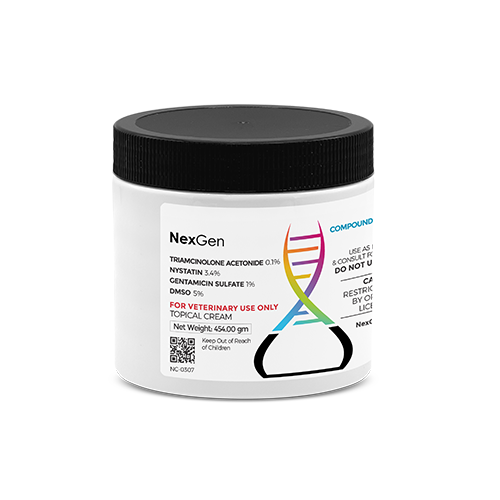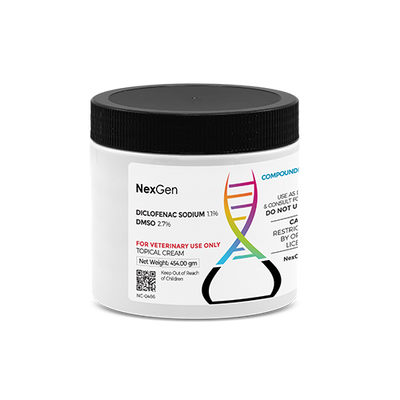
Scratches (Triamcinolone Acetonide + Nystatin + Gentamicin Sulfate + DMSO), Topical Cream, 16oz
Login for pricing
- Brand
- Mixlab
- SKU:
- NC-0307
Horses can develop a variety of allergic and dermatological disorders which give rise to inflammation, irritation and swelling. Many of these are represented by mild- to moderate conditions that can occur in the skin (e.g., dermatitis) or the joints (e.g., arthritis). Such common afflictions, while not usually severe, are unsightly and (more importantly) uncomfortable for the horse.
There are many different causes of skin inflammation, including external irritants, burns, allergens, trauma, and infection (bacterial, viral, parasitic, or fungal).1 During times of warm weather, hot, humid days and biting insects create optimal conditions for skin diseases.1 Horses can also be allergic to things that they ingest and other environmental factors.
Scratches refers to a condition evidenced by irritated or infected skin on the pastern or heel bulbs.2 This often occurs in horses that have been exposed to moisture for long periods. This condition can irritate the skin and cause burning, itching, inflammation, redness and ulcers. Mud and dirty surroundings then create an ideal environment for opportunistic bacteria or fungi. Mild cases of scratches usually respond to cleaning and topical treatment.
Arthritis is an inflammation of a joint or joints that causes pain and stiffness. Arthritis often develops following interference with normal structure and function. Damage to the cartilage and/or the bone via injury or infection results in abrasion (roughening) of the smooth surfaces. Movement of the roughened bone ends and damaged cartilage results in inflammation and swelling.2
Scratches Topical Cream
Scratches Topical Cream contains:
-
Triamcinolone 0.1%
-
Nystatin 3.4%
-
Gentamicin 1%
-
DMSO 5%
Triamcinolone carries numerous potential drug interactions and the Association of Racing Commissioners International Uniform Classification Guidelines for Foreign Substances has designated triamcinolone a CLASS 4/C DRUG.
This product carries numerous potential drug interactions. Please consult your veterinarian prior to beginning any treatment regimen.
FOR RX ONLY: A valid prescription from a licensed veterinarian is required for dispensing this medication.


















